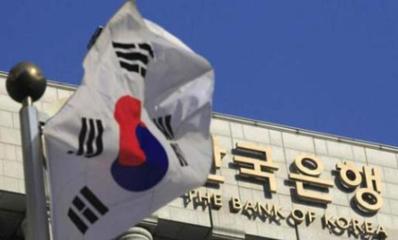
Recently, according to Korean media reports, the Bank of Korea, the central bank of Korea, held a meeting of the financial and monetary Committee and decided to cut the benchmark interest rate by 25 basis points to 3%. The decision marks the first time the Bank of Korea has cut interest rates for two consecutive months since October 2008. As soon as this news came out, it immediately caused widespread concern and hot discussion in the financial market.
The Bank of Korea's decision to cut interest rates is undoubtedly made in the context of a complex and volatile global financial environment. "The rate cut takes into account increased uncertainty over the economy and inflation due to the policy direction of the new U.S. administration," Bank of Korea Governor Rhee Changyong said in explaining the decision, according to Yonhap. This statement reveals the Bank of Korea's response strategy in the face of changes in the external economic environment. However, in-depth analysis of the logic behind it, we can easily find that the Bank of Korea's decision to cut interest rates is not only a passive response to changes in the external environment, but an active adjustment based on a series of complex economic factors.
First of all, from the perspective of the global economic environment, the policy direction of the new US administration has indeed brought a lot of uncertainties to the global economy. In particular, the direction of monetary policy of the US Federal Reserve System (Fed) has a profound impact on global financial markets. In recent years, the Fed has taken several interest rate hikes in response to inflation and economic growth, leading to increased global capital flows and exchange rate volatility. As a country highly dependent on foreign trade, South Korea's economic performance is naturally affected by the Federal Reserve's monetary policy. Therefore, the Bank of Korea chose to cut interest rates, perhaps to hedge the negative impact of the Fed's tightening policy to a certain extent, in order to maintain the stability of the domestic economy.
However, from the perspective of South Korea's domestic economic situation, there are more complex economic problems hidden behind the decision to cut interest rates. According to the Bank of Korea, South Korea's economic growth forecast for this year and next year was cut to 2.2% and 1.9%, respectively, which is well below previous market expectations. At the same time, the Bank of Korea also lowered the South Korean consumer price index (CPI) growth forecast for this year and next. This shows that South Korea's economy is facing a dual dilemma of slowing growth and declining inflationary pressures. In this context, the Bank of Korea chose to cut interest rates, aiming to stimulate corporate investment and personal consumption by reducing financing costs, thereby boosting economic growth.
However, interest rate cuts are not a panacea, and their effects are often constrained by a variety of factors. From the current economic situation in South Korea, the possible problems caused by interest rate cuts can not be ignored.
On the one hand, interest rate cuts may lead to capital outflows and exchange rate depreciation. In the context of globalization, the monetary policies of various countries are interrelated and influence each other. When a central bank chooses to cut interest rates, it often causes its currency to depreciate relative to other currencies. For South Korea, the depreciation of the exchange rate is conducive to the improvement of export competitiveness, but it may also trigger capital outflow, which will increase the instability of the financial market. In particular, against the backdrop of increasing uncertainties in the global economy, capital outflow and exchange rate depreciation could have a greater impact on the Korean financial market.
On the other hand, interest rate cuts may exacerbate debt risks. Spurred by interest-rate cuts, businesses and individuals are often more inclined to increase borrowing to expand investment and consumption. However, this trend can also lead to higher debt levels, which in turn increases the likelihood of debt defaults and financial risks. Especially in the context of South Korea's slowing economic growth and declining corporate profitability, interest rate cuts may further exacerbate the debt pressure of enterprises, and even trigger a debt crisis.
In addition, a rate cut could have a negative impact on the stability of financial markets. Driven by the interest rate reduction policy, investors are often more inclined to pursue high-risk, high-yield investment varieties to obtain higher rates of return. This trend may lead to excessive speculation and bubbles in the financial market, which will increase the fragility and instability of the financial market. Once the market environment changes, these bubbles can burst quickly, causing severe shocks and losses in financial markets.
It is worth noting that the Bank of Korea's decision to cut interest rates is not smooth sailing. According to the South Korean "Dong-a Ilbo" reported that in the meeting of the Monetary Policy Committee, in addition to Rhee Changyong, six members of the committee, four of the "interest rate cut" opinion, while the remaining two expressed opposition. The split shows that the central bank is not united in its decision to cut interest rates. This also reflects from one side the complexity and uncertainty of the current Korean economy.
From a deeper perspective, behind the Bank of Korea's continuous interest rate cuts is actually the urgent need for structural adjustment and transformation and upgrading of the South Korean economy. However, this adjustment is not achieved overnight, and requires the joint efforts and cooperation of the government, enterprises and individuals. In this process, the Bank of Korea, as a monetary policy maker, needs to weigh various factors more carefully to ensure the effectiveness and sustainability of monetary policy.
Specifically, the Bank of Korea should fully consider changes and trends in the domestic and foreign economic environment, as well as the characteristics and needs of the domestic economic structure when formulating monetary policy. While cutting interest rates, financial supervision and risk prevention measures should also be strengthened to ensure the stable and healthy development of the financial market. At the same time, the government and enterprises should also actively respond to the challenges and opportunities brought by the interest rate cut, strengthen structural adjustment and innovative development, and enhance the competitiveness and sustainability of the economy.
To sum up, although the Bank of Korea's continuous interest rate cuts reflect the difficulties and challenges facing the Korean economy to a certain extent, they also expose a series of potential risks and problems. In the future development, the Bank of Korea and the government need to formulate and implement monetary and economic policies more carefully to ensure stable economic growth and healthy development of the financial market. At the same time, enterprises and individuals should also actively adapt to policy changes and market environment, strengthen risk management and innovative development capabilities, and jointly promote the transformation and upgrading of the Korean economy and sustainable development.

On the just concluded trading day, the three major stock indexes in the United States closed with a moderate upward trend, marking the fifth consecutive trading day of uptrend in the market.
On the just concluded trading day, the three major stock in…
By the end of 2025, the US financial sector is being swept …
In just one month, former Japanese Prime Minister Shigeru I…
On the grand stage of the financial market, expectations of…
The Japanese government officially finalized a supplementar…
A recent analysis indicates that North Korea is leveraging …